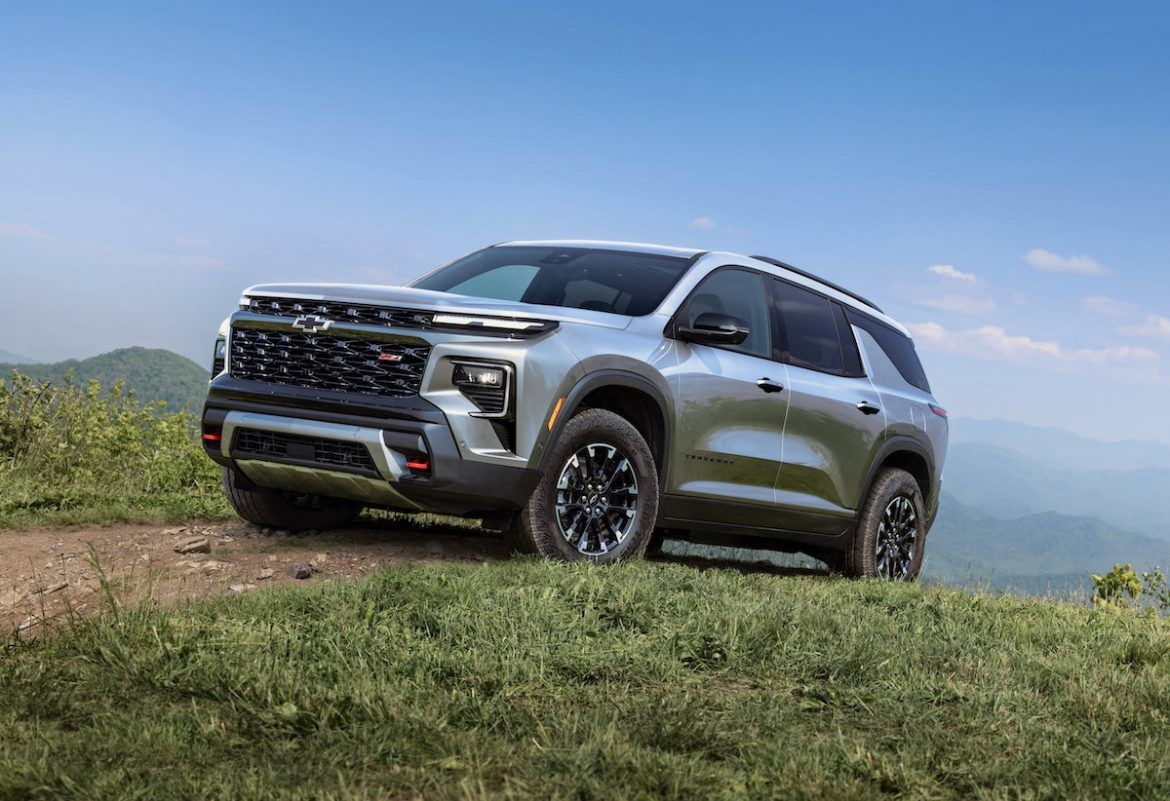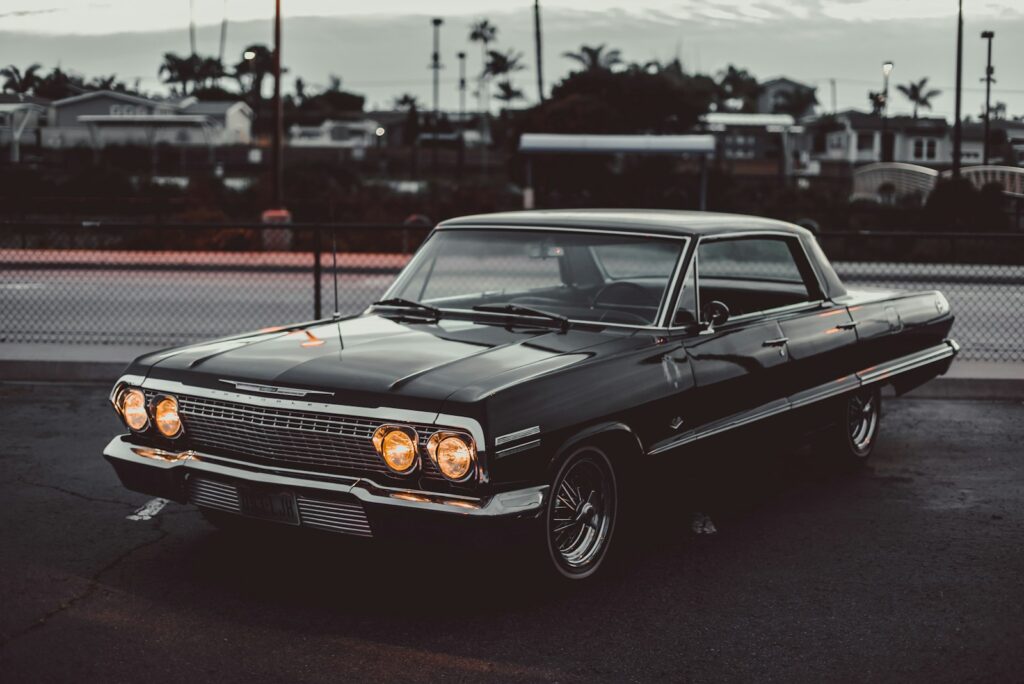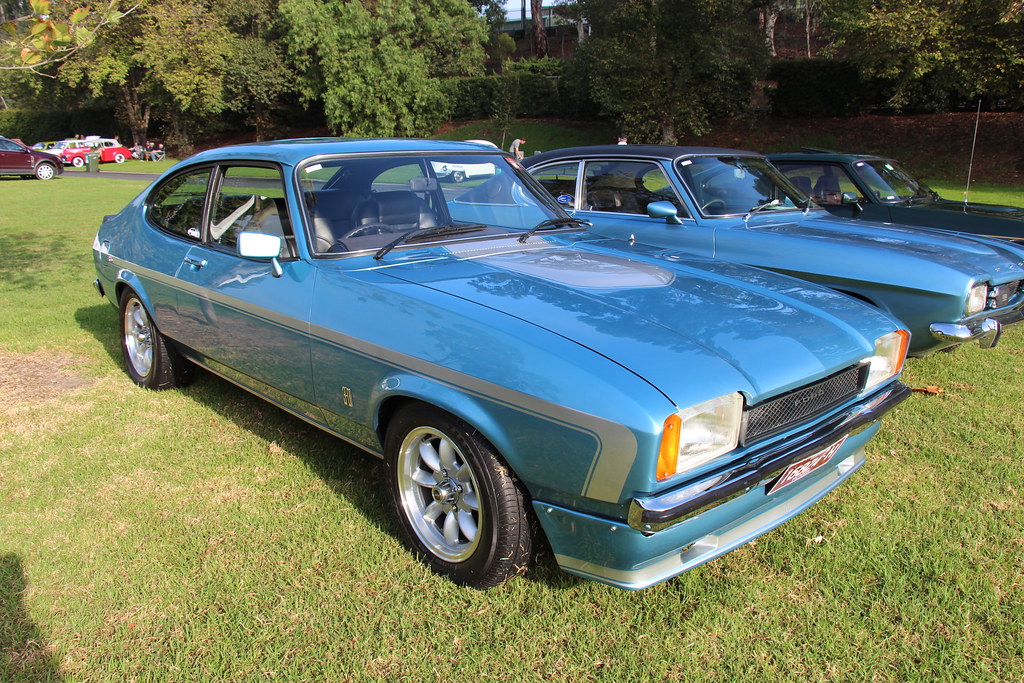
Buying a classic car is a captivating journey, often fueled by nostalgia and the allure of a bygone era. Gone are the days when enthusiasts relied solely on word of mouth or gut instinct; today, comprehensive online resources allow for easy access to a vehicle’s history and comparative data across various makes and models. This newfound accessibility, however, doesn’t always shield buyers from potential pitfalls.
Despite the wealth of information at our fingertips, many classic car owners still experience buyer’s remorse. The dream of cruising in a vintage beauty can quickly turn into a nightmare of unexpected repairs, exorbitant maintenance costs, and the discovery of hidden issues. For those who finance their classic car with high-interest loans, a poor purchase decision can lead to significant financial hardship and regret.
Considering the substantial investment a classic car represents, making an informed decision is paramount. We’ve delved deep into the automotive archives, consulting with experts to bring you a comprehensive guide. These are 15 classic cars you might want to skip, no rose-colored glasses required. Join us as we pop the hood on these potential money pits, starting with seven models that have consistently disappointed collectors.
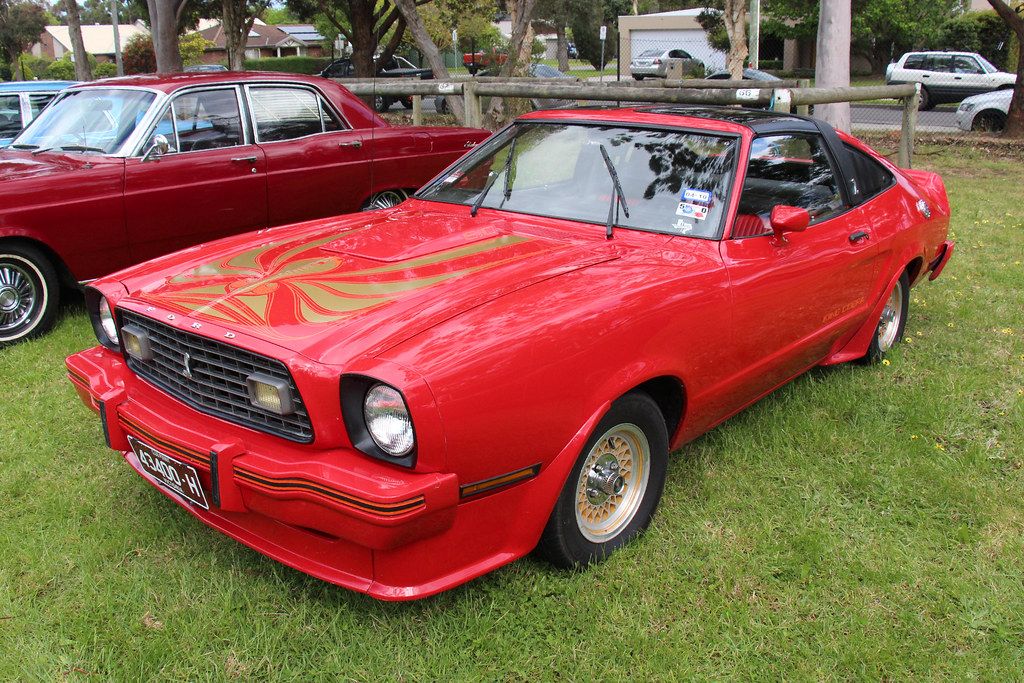
1. **1974 Ford Mustang II**The early 1970s marked a period of significant change for the automotive industry, particularly with the onset of the gas crisis. Ford’s response to this challenging landscape was the 1974 Mustang II, a radical departure from its muscle-car predecessors. Unfortunately, this model landed precisely as fuel economy became paramount, forcing it to lean heavily into practicality over performance, a move that alienated many traditional Mustang enthusiasts.
Built on the platform of the humble Pinto, the Mustang II struggled to live up to the iconic nameplate. It typically came standard with a 2.3L inline-four engine, producing a meager 88 horsepower, a far cry from the roaring V8s of earlier generations. Even the optional V6 powerplant offered little in the way of urgency, leaving the car feeling severely underpowered and robbing it of the spirited driving experience expected from a Mustang.
Beyond its lackluster performance, the Mustang II’s styling was often criticized for being bland, lacking the aggressive attitude and distinctive lines that defined previous Mustangs. Collectors today tend to avoid these models not only for their weak performance but also for their questionable build quality and limited parts support. It represents a low point in the Mustang’s storied history, a compromise that few enthusiasts are eager to embrace.
Car Model Information: 2024 Ford F-150 XLT
Name: Second generation
Caption: Ford Mustang II coupe
Aka: Ford Mustang II , Ford T5 (in Germany)
Class: Pony car,Subcompact car
Production: 1973–1978
ModelYears: 1974–1978
Predecessor: Ford Mustang (first generation)
Successor: Ford Mustang (third generation)
Assembly: Unbulleted list
Layout: Front-engine, rear-wheel-drive layout
BodyStyle: coupé,hatchback
Related: Ford Pinto,Ford Pinto
Manufacturer: Ford Motor Company
Engine: ubl
Transmission: ubl
Wheelbase: cvt
Length: cvt
Width: cvt
Height: cvt
Designer: Buck Mook, Dick Nesbitt
Categories: All articles with dead external links, All articles with unsourced statements, Articles with dead external links from April 2024, Articles with permanently dead external links, Articles with short description
Summary: The second-generation Ford Mustang, marketed as the Ford Mustang II, is a two- or three-door, four-passenger, front-engine/rear-drive pony car manufactured and marketed by Ford from 1973 until 1978. Introduced in September 1973 for the 1974 model year, the Mustang II arrived roughly coincident with the oil embargo of 1973 and subsequent fuel shortages. Developed under Lee Iacocca, it was an “entirely new kind of pony car.” Ford “decided to call it Mustang II, since it was a new type of pony car designed for an era of high gas prices and fuel shortages.”
The Mustang II was 490 lb (222 kg) lighter and almost 19 in (483 mm) shorter than the 1973 Mustang, and derived from the subcompact Pinto platform. While sharing a limited number of driveline components with the Pinto, the Mustang II employed an exclusive subframe, isolating its front suspension and engine mount subframe. The steering used a rack-and-pinion design.
Named Motor Trend’s 1974 Car of the Year and reaching over 1.1 million sales over four years of production, the Mustang II is noted simultaneously for both its marketing prescience and strong sales – while criticized as having abandoned essential aspects of the Mustang heritage and described, in a retrospective after 40 years since its introduction, as embodying the Malaise era.
Get more information about: Ford Mustang (second generation)
Buying a high-performing used car >>>
Brand: Ford Model: Mustang II
Price: $41,604 Mileage: 9,645 mi.
Read more about: Beyond the Legends: 15 Affordable Classic Pontiacs Every Enthusiast Should Consider for Their Garage
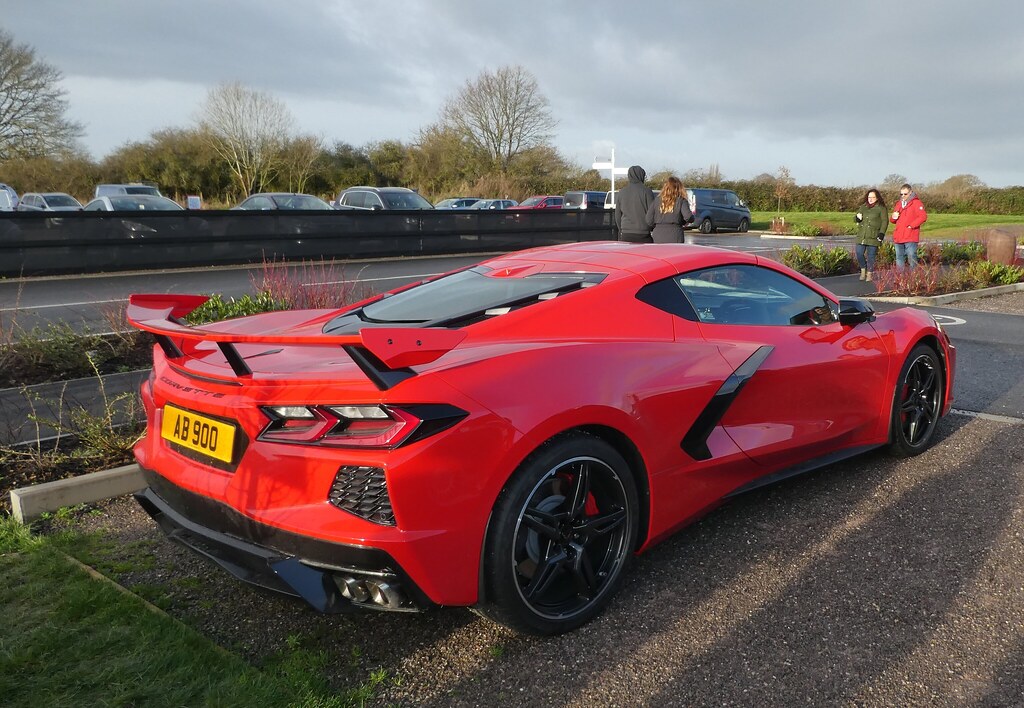
2. **1980 Chevrolet Corvette (L48)**For many, the Chevrolet Corvette is the quintessential American sports car, synonymous with power, style, and performance. However, not all generations or models uphold this esteemed reputation, and the early 1980s C3 Corvettes, particularly those equipped with the L48 engine, are often cited as a period when the Corvette lost much of its bite, despite still looking the part.
The 1980 base L48 engine, a 5.7L V8, was severely hampered by stringent emissions restrictions and a renewed focus on fuel economy. This resulted in a paltry output of just 190 horsepower, a figure that felt significantly underwhelming, especially by Corvette standards. The weight-to-power ratio was decidedly out of sync, leading to sluggish acceleration and a driving experience that was far from exhilarating.
Compounding the performance woes were issues related to build quality. Interior plastics from this era were known to age poorly, often becoming brittle and developing an unsightly appearance. Electronics were finicky and prone to failure, adding to the owner’s frustration. The overall ride quality often prioritized style over substance, and these factors combined have kept their values flat, making them less appealing than C3 models from more potent years.
Car Model Information: 2004 Chevrolet Corvette Base
Name: Chevrolet Corvette
Caption: 2021 Chevrolet Corvette C8
Manufacturer: Chevrolet
Production: 1953–present
ModelYears: bulleted list
Assembly: bulleted list
Class: Sports car
BodyStyle: coupé
Layout: Front-engine, rear-wheel-drive layout,Rear mid-engine, rear-wheel-drive layout
Categories: 1950s cars, 1960s cars, 1970s cars, 1980s cars, 1990s cars
Summary: The Chevrolet Corvette is a line of American two-door, two-seater sports cars manufactured and marketed by General Motors under the Chevrolet marque since 1953. Throughout eight generations, indicated sequentially as C1 to C8, the Corvette is noted for its performance, distinctive styling, lightweight fiberglass or composite bodywork, and competitive pricing. The Corvette has had domestic mass-produced two-seater competitors fielded by American Motors, Ford, and Chrysler; it is the only one continuously produced by a United States auto manufacturer. It serves as Chevrolet’s halo car.
In 1953, GM executives accepted a suggestion by Myron Scott, then the assistant director of the Public Relations department, to name the company’s new sports car after the corvette, a small, maneuverable warship. Initially, a relatively modest, lightweight 6‑cylinder convertible, subsequent introductions of V8 engines, competitive chassis innovations, and rear mid-engined layout have gradually moved the Corvette upmarket into the supercar class. In 1963, the second generation was introduced in coupe and convertible styles. The first three Corvette generations (1953–1982) employed body-on-frame construction, and since the C4 generation, introduced in 1983 as an early 1984 model, Corvettes have used GM’s unibody Y‑body platform. All Corvettes used front mid-engine configuration for seven generations, through 2019, and transitioned to a rear mid-engined layout with the C8 generation.
Initially manufactured in Flint, Michigan, and St. Louis, Missouri, the Corvette has been produced in Bowling Green, Kentucky, since 1981, which is also the location of the National Corvette Museum. The Corvette has become widely known as “America’s Sports Car.” Automotive News wrote that after being featured in the early 1960s television show Route 66, “the Corvette became synonymous with freedom and adventure,” ultimately becoming both “the most successful concept car in history and the most popular sports car in history.”
Get more information about: Chevrolet Corvette
Buying a high-performing used car >>>
Brand: Chevrolet Model: Corvette
Price: $22,999 Mileage: 29,579 mi.

3. **1976 Cadillac Eldorado Convertible**The 1976 Cadillac Eldorado Convertible holds a unique, albeit problematic, place in automotive history. It was marketed as the ‘last American convertible’ at the time, a declaration that generated an artificial sense of collector hype. This massive, luxurious vehicle was certainly a statement piece, embodying the era’s penchant for grand scale and opulence.
Under the expansive hood resided an equally massive 500-cubic-inch V8 engine, which on paper, sounds impressive. However, emissions regulations once again played a significant role in stifling its potential, limiting its output to a mere 190 horsepower. This combination of immense weight and comparatively little power resulted in a decidedly floaty and unresponsive driving experience, making it feel more like a couch on wheels than a dynamic touring machine.
Many original buyers purchased these Eldorados with the intention of stashing them away, hoping for a future appreciation in value that largely never materialized. Today, they remain large, somewhat awkward to drive, and costly to maintain, primarily due to their intricate components and sheer scale. Nostalgia alone often struggles to overcome the practical headaches and the reality that it drives more ponderously than most discerning collectors would prefer.
Car Model Information: 2024 Ford F-150 XLT
Caption: 1963 Cadillac Eldorado Convertible
Name: Cadillac Eldorado
Manufacturer: Cadillac
Production: 1952–2002
Layout: Front-engine, rear-wheel-drive layout
Aka: Cadillac Fleetwood Eldorado
Class: Personal luxury car
Successor: Cadillac CTS
Categories: 1960s cars, 1970s cars, 1980s cars, 1990s cars, 2000s cars
Summary: The Cadillac Eldorado is a luxury car manufactured and marketed by the Cadillac Motor Car Division of General Motors from 1952 until 2002, over twelve generations.
The Eldorado was at or near the top of the Cadillac product line. The original 1953 Eldorado convertible and the Eldorado Brougham models of 1957–1960 had distinct bodyshells and were the most expensive models offered by Cadillac during those years. The Eldorado was never less than second in price after the Cadillac Series 75 limousine until 1966. Beginning in 1967, the Eldorado retained its premium position in the Cadillac price structure, but was manufactured in high volumes on a unique, two-door personal luxury car platform.
The Eldorado carried the Fleetwood designation from 1965 through 1972, and was seen as a modern revival of the pre-war Cadillac V-12 and Cadillac V-16 roadsters and convertibles.
Get more information about: Cadillac Eldorado
Buying a high-performing used car >>>
Brand: Cadillac Model: Eldorado Convertible
Price: $41,604 Mileage: 9,645 mi.
Read more about: The Zenith of Chrome and Power: 15 Legendary Cars That Defined the 1950s Automotive Golden Era

4. **1982 DeLorean DMC-12**The DeLorean DMC-12 is undeniably one of the most recognizable cars in history, achieving legendary status thanks to its starring role in the ‘Back to the Future’ film franchise. Its distinctive gull-wing doors and brushed stainless-steel body panels project an image of futuristic coolness that remains captivating to this day. However, the reality of owning a DeLorean often falls far short of its cinematic appeal.
Beneath its striking exterior, the DMC-12 was powered by a 2.8L V6 engine, which produced a rather modest 130 horsepower. Coupled with a curb weight exceeding 2,700 pounds, this resulted in a glacial 0-60 mph acceleration time of nearly 10 seconds. Its handling, while adequate, did little to elevate the driving experience, leaving many owners wishing for more performance to match its exotic looks.
Maintenance challenges further detract from the DeLorean’s allure. The stainless-steel body panels, while visually unique, are notoriously difficult to repair or refinish without specialized expertise, and finding compatible parts has always been an inconsistent endeavor due to its short production run and the company’s tumultuous history. Inconsistent build quality from its Northern Ireland plant also contributes to a car that is often more of a conversation piece and a static display than a reliable, enjoyable daily driver.
Car Model Information: 1981 Delorean DMC-12
Name: DMC DeLorean
Alt: 1983 DeLorean
Caption: 1983 DeLorean
Manufacturer: DeLorean Motor Company
Production: January 21, 1981 – December 1982
ModelYears: 1981–1983
Assembly: Dunmurry
Designer: Giorgetto Giugiaro
Class: Sports car
BodyStyle: coupé
Layout: Rear-engine, rear-wheel-drive layout
Doors: Gull-wing doors
Engine: 2.85 L
Abbr: on
Powerout: 130 hp
Transmission: 5-speed manual ,3-speed automatic
Wheelbase: 2413 mm
Length: 4267 mm
Width: 1988 mm
Height: 1140 mm
Weight: 1233 kg
Sp: us
Categories: 1980s cars, All Wikipedia articles written in American English, Articles with short description, Automobiles with backbone chassis, Automobiles with gull-wing doors
Summary: The DMC DeLorean is a rear-engine, two-seat sports car manufactured and marketed by John DeLorean’s DeLorean Motor Company (DMC) for the American market from 1981 until 1983—ultimately the only car brought to market by the fledgling company. The DeLorean is sometimes referred to by its internal DMC pre-production designation, DMC-12, although this was not used in sales or marketing materials for the production model.
Designed by Giorgetto Giugiaro, the DeLorean is noted for its gull-wing doors and brushed stainless-steel outer body panels, as well as its lack of power and performance. Though its production was short-lived, the DeLorean became widely known after it was featured as the time machine in the Back to the Future films.
With the first production car completed on January 21, 1981, the design incorporated numerous minor revisions to the hood, wheels and interior before production ended in late December 1982, shortly after DMC filed for bankruptcy and after total production reached an estimated 9,000 units.
Despite the car having a reputation for poor build quality and an unsatisfactory driving experience, the DeLorean continues to have a strong following, driven in part by the popularity of Back to the Future. 6,500 DeLoreans were estimated to still be on the road as of 2015.
Get more information about: DMC DeLorean
Buying a high-performing used car >>>
Brand: DeLorean Model: DMC-12
Price: $56,500 Mileage: 0 mi.
Read more about: From Zero to Hero (on Screen): The Iconic Cars That Were Only Cool Because of the Movies They Were In

5. **1971 AMC Gremlin**In the early 1970s, American Motors Corporation (AMC) sought to capture a slice of the growing compact car market, leading to the introduction of the AMC Gremlin. Designed to be an economical offering, the Gremlin was essentially a chopped-up Hornet, resulting in a design that was, to put it mildly, cartoonish and polarizing. Its proportions were odd, and the overall aesthetic has rarely been celebrated as a classic.
Performance-wise, the base model Gremlin typically came equipped with a 3.3L inline-six engine that delivered a mere 100 horsepower. This modest power output was insufficient to overcome its unusual looks or its rather basic interior. The driving experience was characterized by a rough ride and a general feeling of frugality, reflecting its budget-oriented origins.
The Gremlin was inexpensive when new, and unfortunately, that ‘cheap’ feeling has persisted throughout its lifespan. Reliability can be spotty, and finding trim pieces or specific components for restoration can be a significant challenge, making it a frustrating project for any enthusiast. For many, the Gremlin remains more of an automotive punchline than a genuinely collectible classic car, a testament to its peculiar design and underwhelming attributes.
Read more about: Honestly, We Miss Them: 14 Once-Popular Car Brands That Vanished From Our Roads (And Our Hearts!)

6. **1979 Chrysler Cordoba**The Chrysler Cordoba, famously marketed with the sophisticated Ricardo Montalbán extolling its ‘fine Corinthian leather,’ was an attempt to blend personal luxury with a touch of muscle car heritage from a fading era. It certainly leaned heavily on image and perceived opulence, rather than delivering substantial performance or groundbreaking engineering, which ultimately contributed to its status as a less desirable classic today.
While the Cordoba offered a choice of V8 engines, even the larger 360-cubic-inch version often felt sluggish when tasked with moving the car’s considerable bulk. Performance was underwhelming, and the handling was, at best, vague and unengaging, lacking the precision or responsiveness desired in a true enthusiast’s vehicle. Build quality also left much to be desired, with interiors and components not always standing the test of time.
The Cordoba attempted to occupy a niche between luxurious grand tourers and potent muscle cars but ultimately fell short on both counts. It was too soft and underpowered to truly be a muscle car, and its luxury aspirations were often undercut by its less refined aspects. Today, its appeal is largely ironic, as there are many contemporary luxury coupes from the same era that offer a far more compelling and genuinely luxurious ownership experience.
Car Model Information: 1978 Chrysler Cordoba Coupe
Assembly: Windsor Assembly,Windsor, Ontario
Name: Chrysler Cordoba
Caption: 1978 Chrysler Cordoba
Manufacturer: Chrysler Corporation
Class: Personal luxury car
ModelYears: 1970,1975–1983
Predecessor: Chrysler 300 non-letter series
Successor: Chrysler Laser
BodyStyle: coupe
Layout: Front-engine, rear-wheel drive layout
Categories: 1980s cars, Articles with short description, Cars introduced in 1975, Chrysler vehicles, Commons category link from Wikidata
Summary: The Chrysler Cordoba was introduced as a full-sized luxury car based on the Chrysler Newport that was marketed during the 1970 model year. It was also applied to a show car exhibited that year.
The nameplate was then applied to an intermediate-sized two-door personal luxury car starting with the 1975 model year. The Cordoba was manufactured by Chrysler in North America over two generations until the 1983 model year.
The personal luxury version was the company’s first model produced specifically for that market segment and the first Chrysler-branded vehicle smaller than full-size.
The name was taken from the Spanish city of Córdoba, Spain.
Get more information about: Chrysler Cordoba
Buying a high-performing used car >>>
Brand: Chrysler Model: Cordoba
Price: $10,800 Mileage: 40,282 mi.
Read more about: Remember These? 12 Mind-Blowing Classic TV Car Ads That Vanished From Our Screens (But Live On In Our Hearts!)

7. **1973 Triumph Stag**The Triumph Stag, introduced in 1970, was a grand design from the British Leyland marque, aiming to offer stylish open-top motoring with the allure of V8 power. When it first launched, it made a strong impression at international car shows and was initially in high demand among auto enthusiasts and collectors, leading to somewhat inflated prices. Its distinct look and T-bar roll hoop design certainly gave it a unique presence.
However, the Stag’s promise of elegant performance was severely undermined by a critical design flaw: its bespoke 3.0-liter V8 engine. This engine became notorious for chronic overheating issues, which frequently led to catastrophic head gasket failures and other costly internal repairs. As professional mechanic Stamatis Zotos noted, “Although it has a distinct look and is initially appealing… the original 3.0-liter V8 had chronic overheating issues, often leading to head gasket failures and other costly repairs.”
What makes the Triumph Stag particularly challenging for modern classic car owners is the constant upkeep and the need for significant mechanical intervention just to keep them reliable. Many Stags today have undergone cooling system redesigns or even complete engine swaps to address these inherent flaws. Unless an owner possesses significant mechanical aptitude and an abundance of patience, the headaches associated with the Stag’s notoriously unreliable engine often far outweigh its undeniable charm and stylish aesthetics.
Navigating the classic car market demands a discerning eye, and as we continue our expert-driven review, it becomes clear that not every vintage badge guarantees a cherished addition to your garage. The pitfalls can range from mechanical nightmares to diminished market appeal, each eroding the joy of ownership and the soundness of your investment. Let’s delve into eight more models that often disappoint, revealing the hidden costs and persistent headaches that make them less than ideal choices for today’s discerning collector. The journey through automotive history continues, uncovering why certain icons are better left admired from a distance.
Car Model Information: 1972 Triumph Stag
Sp: uk
Caption: 1974 Triumph Stag (with after-market wheels)
Name: Triumph Stag
Production: 1970–1977,25,939 made
Manufacturer: Triumph Motor Company
Class: Sports tourer
Layout: Front-engine, rear-wheel-drive layout
Length: 173 in
Abbr: on
Width: 63.5 in
Weight: 2800 lb
Height: 49.5 in
Wheelbase: 100 in
Related: Triumph TR250,Triumph 2000
Engine: Triumph V8
Designer: Giovanni Michelotti
Categories: 1970s cars, All Wikipedia articles written in British English, All articles with unsourced statements, Articles with short description, Articles with unsourced statements from July 2018
Summary: The Triumph Stag is a 2+2 sports tourer which was sold between 1970 and 1978 by the British Triumph Motor Company, styled by Italian designer Giovanni Michelotti.
Get more information about: Triumph Stag
Buying a high-performing used car >>>
Brand: Triumph Model: Stag
Price: $9,999 Mileage: 63,159 mi.
Read more about: Barbra Streisand’s Enduring Tribute: Remembering Robert Redford’s Life and Legacy

8. **Maserati Biturbo (1982 to 1988)**The Maserati Biturbo, produced from 1982 to 1988, might initially entice a budget-conscious collector with its Italian styling and performance aspirations. However, as professional mechanic and car rental company owner Stamatis Zotos aptly points out, this particular classic vehicle is one to decidedly ‘stay away from buying.’ Its reputation, unfortunately, precedes it, marred by significant issues concerning both build quality and overall reliability.
Beneath its intriguing exterior, the Biturbo harbored a series of mechanical and electrical vulnerabilities that transformed ownership into a relentless pursuit of repairs. Owners frequently reported critical turbo failures, which could be incredibly costly to diagnose and rectify, undermining the very performance promise the car made. These issues were not isolated incidents but rather systemic problems that consistently plagued the model throughout its production run.
Adding to the frustration were persistent electrical issues, a common lament among many classic Italian car enthusiasts, but particularly pronounced in the Biturbo. These gremlins could lead to unpredictable malfunctions, leaving owners stranded or facing exorbitant bills from specialist mechanics. The cumulative effect of these inherent flaws rendered the Maserati Biturbo an exceptionally expensive and frustrating car to maintain and repair, making its initial affordability a deceptive lure.
Consequently, despite its exotic badge and once-novel twin-turbocharged engine, the Biturbo’s real-world ownership experience has significantly dampened its market appeal. Collectors seeking a rewarding classic often bypass these models, understanding that the allure of Italian design rarely compensates for the financial drain and constant vigilance required to keep a Maserati Biturbo running, let alone enjoying it.
Car Model Information: 1985 Maserati Biturbo Base
Name: Maserati Biturbo
Caption: Maserati Biturbo E
Manufacturer: Maserati
Production: 1981–1994
Assembly: Modena,Rho, Lombardy
Related: Maserati Shamal,Maserati Ghibli#Ghibli (AM336),Maserati Barchetta,Maserati Quattroporte#Quattroporte IV,Maserati Karif
Designer: Pierangelo Andreani (1977),Marcello Gandini,Zagato
Class: Grand tourer
BodyStyle: 2+2 (car body style),coupé,sedan (car),Cabriolet (automobile)
Layout: Front-engine, rear-wheel-drive layout
Engine: twin-turbocharged,2.5 L twin-turbocharged 90° V6,2.8 L twin-turbocharged 90° V6
Transmission: ZF Friedrichshafen,Automatic transmission,ZF Friedrichshafen
Wheelbase: {{convert,2,514,mm,in,1,abbr=on
Length: {{convert,4,150,mm,in,1,abbr=on
Abbr: on (228)
Width: {{convert,1,710,mm,in,1,abbr=on
Height: {{convert,1,310,mm,in,1,abbr=on
Successor: Maserati Ghibli#Ghibli (AM336),Maserati Quattroporte#Quattroporte IV
Sp: uk
Categories: 1990s cars, All articles needing additional references, All articles with unsourced statements, Articles needing additional references from November 2019, Articles needing additional references from October 2010
Summary: The Maserati Biturbo is a family of executive grand tourers produced by Italian automobile manufacturer Maserati between 1981 and 1994. The original Biturbo was a two-door, four-seater notchback coupé (of somewhat smaller dimensions than the BMW 3 Series of the time) featuring, as the name implies, a two-litre V6 engine with two turbochargers and a luxurious interior.
The car was designed by Pierangelo Andreani, Chief of Centro Stile Maserati up to 1981, somewhat influenced by the design of the then recent Quattroporte III (penned by Italdesign Giugiaro).
All Maserati models introduced from the Biturbo’s inception in 1981, until 1997, were based on variants of the original Biturbo architecture, including the later grand tourers like the Shamal and Ghibli II, as well as the 1994 fourth generation Quattroporte, which used an evolved and slightly stretched (to 2.65 m / 104.3 in wheelbase) Biturbo Saloon platform.
The Barchetta, while of a different layout entirely, used an ultimate version of the Biturbo V6 engine.
Get more information about: Maserati Biturbo
Buying a high-performing used car >>>
Brand: Maserati Model: Biturbo
Price: $13,899 Mileage: 18,319 mi.
Read more about: Buyer’s Guide: 14 Classic Cars That Are More Pitfall Than Pride, According to Seasoned Automotive Experts
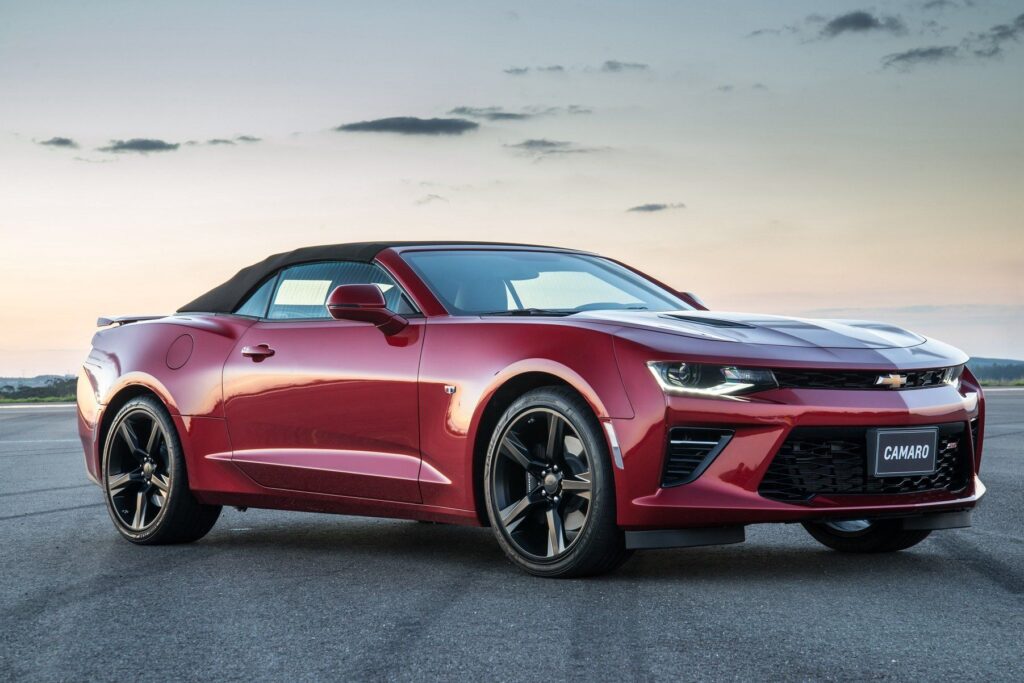
9. **1976-1981 Chevrolet Camaro**The Chevrolet Camaro stands as an enduring symbol of American muscle, a car that has carved a formidable legacy for itself across generations. Yet, even within such an iconic lineage, there are specific model years that fall short of the high standards set by their peers. The Camaros manufactured between 1976 and 1981, now considered classics, represent a period where the model encountered a noticeable dip in desirability, presenting a cautionary tale for potential buyers.
According to Andy Saari, a master automotive technician at Nexedge Technician, these particular vehicles ‘suffered from poor build quality, lackluster engines and were heavily impacted by the implementation of tighter emission regulations.’ This confluence of factors severely compromised the driving experience, transforming what should have been a roaring muscle car into a comparatively subdued and less engaging machine. The raw power and responsiveness that enthusiasts craved were simply absent in these iterations.
The implications of these problems extended beyond mere performance. Saari highlights how ‘all of these issues have impacted the Chevrolet Camaro’s overall value, especially in comparison to earlier or later models.’ While earlier Camaros from the late 1960s and more modern versions continue to command strong interest and prices, the 1976-1981 models often languish with flatter values, struggling to attract serious collector attention.
Furthermore, the combination of inherent build quality issues and the necessity for specialized repairs means that owning one of these specific-year Camaros can lead to ‘expensive repairs and maintenance’ that ‘cut into any investment or resale value the vehicle might have had.’ For many, the financial commitment required to restore or maintain these models simply doesn’t align with their eventual market worth, making them a less-than-ideal choice for those seeking both passion and prudent investment.
Car Model Information: 2018 Chevrolet Camaro 1LS
Name: Chevrolet Camaro
Manufacturer: Chevrolet
Production: 1966–2002,2009–2023
ModelYears: 1967–2002,2010–2024
Class: Pony car
BodyStyle: coupe,convertible
Platform: GM F platform,GM Zeta platform,GM Alpha platform
Layout: Front-engine, rear-wheel-drive layout
Categories: 1970s cars, 1980s cars, 1990s cars, 2+2 coupés, 2000s cars
Summary: The Chevrolet Camaro is a mid-size American automobile manufactured by Chevrolet, classified as a pony car. It first went on sale on September 29, 1966, for the 1967 model year and was designed to compete with the Ford Mustang. The Camaro shared its platform and major components with the Firebird, produced by General Motors’ Pontiac division that was also introduced for the 1967 model year.
Four distinct generations of the Camaro were developed before production ended in 2002. The nameplate was revived on a concept car that evolved into the fifth-generation Camaro; production started on March 16, 2009.
Production of the sixth generation of the Camaro ended in December 2023, for the 2024 model year.
Get more information about: Chevrolet Camaro
Buying a high-performing used car >>>
Brand: Chevrolet Model: Camaro
Price: $19,125 Mileage: 69,196 mi.
Read more about: The Cars That Became Stars: 12 Iconic Vehicles from 70s & 80s TV & Film

10. **Early Porsche 911s (circa 1969 or earlier)**The Porsche 911 is, without question, one of the most revered sports cars in history, celebrated for its engineering prowess and enduring design. Modern iterations continue to be in high demand, setting benchmarks for performance and desirability. However, for those delving into the origins of this legend, a stark warning comes from automotive experts like Andy Saari, who suggests staying away from ‘earlier models — those built around 1969 or earlier — due to their array of shortcomings.’
These foundational 911s, while historically significant, possessed certain design characteristics that translated into challenging handling dynamics. Saari elaborates, stating, ‘The 911’s short wheelbase and rear-engine layout led to a tendency for sudden oversteer, making them tricky to handle at high speeds.’ This particular trait could make for a rather unforgiving driving experience, especially for less experienced enthusiasts or those accustomed to more predictable modern vehicle dynamics.
Beyond their tricky temperament, these early models are also susceptible to the ravages of time and the elements. They ‘tend to suffer from rust and related damage,’ which can manifest in various structural and aesthetic compromises. The battle against corrosion often necessitates extensive and costly restoration work, particularly given the specialized nature of classic Porsche bodywork and parts.
Consequently, the combination of demanding handling, the propensity for rust, and the significant expenses tied to restoration means that acquiring and maintaining an early Porsche 911 demands substantial commitment, skill, and financial resources. While their historical importance is undeniable, their practical ownership challenges often outweigh their allure for all but the most dedicated and well-heeled collectors.
Car Model Information: 2024 Porsche 911
Name: Porsche 911
Caption: The 1 millionth 911 produced on display at Volkswagen Group Forum, Berlin
Designer: Ferdinand Alexander Porsche
Manufacturer: Porsche
Production: September 1964 – present
Assembly: Stuttgart,Baden-Württemberg
Class: Sports car
BodyStyle: unbulleted list
Related: unbulleted list
Layout: Rear-engine design,rear-wheel drive
Predecessor: Porsche 356
Categories: 1970s cars, 1980s cars, 1990s cars, 2+2 coupés, 2000s cars
Summary: The Porsche 911 model series (pronounced Nine Eleven or in German: Neunelf) is a family of German two-door, high performance rear-engine sports cars, introduced in September 1964 by Porsche AG of Stuttgart, Germany, and now in its eighth generation. All 911s have a rear-mounted flat-six engine, and usually 2+2 seating, except for special 2-seater variants. Originally, 911s had air-cooled engines, and torsion bar suspension, but the 911 has been continuously enhanced, and evolved across generations. Though the 911 core concept has remained largely unchanged, water-cooled engines were introduced with the 996 series in 1998, and front and rear suspension have been replaced by Porsche-specific MacPherson suspension up front, and independent multi-link rear suspension.
The 911 has been raced extensively by private and factory teams, in a variety of classes. It is among the most successful competition cars. In the mid-1970s, the naturally aspirated 911 Carrera RSR won world championship races including Targa Florio and the 24 Hours of Daytona. The 911-derived 935 turbo also won the 24 Hours of Le Mans in 1979. Porsche won the World Championship for Makes in 1976, 1977, 1978, and 1979 with 911-derived models.
In a 1999 poll to determine the Car of the Century, the 911 ranked fifth — one of two in the top five that had remained continuously in production (the original Beetle remained in production until 2003). The one millionth example was manufactured in May 2017 and is in the company’s permanent collection.
Get more information about: Porsche 911
Buying a high-performing used car >>>
Brand: Porsche Model: 911
Price: $239,888 Mileage: 6,944 mi.
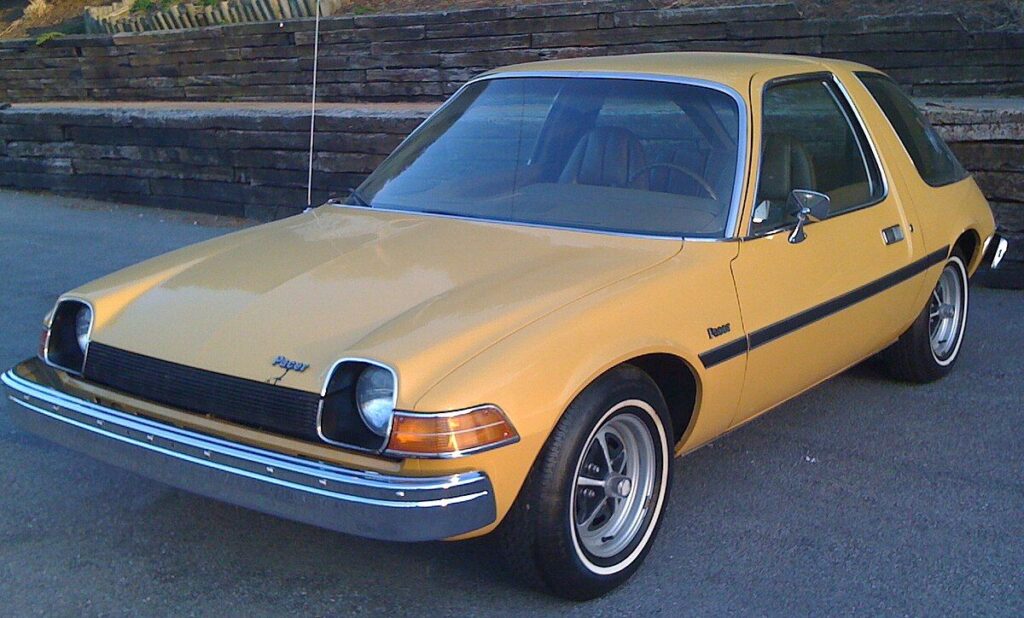
11. **1975-1980 AMC Pacer**Introduced in 1975, the AMC Pacer carved out a unique niche in American automotive history, standing out with its distinctive, wide-bodied ‘fishbowl’ design. During its production run until 1980, it was certainly a visually striking car, embodying a blend of quirky styling and an attempt at compact efficiency. While it might have been considered a ‘cool car back in its day,’ experts now largely agree that it’s ‘likely not worth the investment now,’ primarily due to a litany of underlying structural and performance flaws.
The Pacer’s design, though unconventional, contributed to significant issues. It suffered from notable ‘structural flaws,’ particularly concerning its heavy curb weight and the integrity of its body. These structural deficiencies, coupled with inherent problems in the ‘steering’ system, made for a driving experience that was often cumbersome and less than precise, failing to inspire confidence on the road.
Peter Niebling, a dealer principal at Redlands Mazda, offers a blunt assessment of the Pacer’s build and long-term viability, observing that ‘The Pacer is more comprehensive than a tank.’ This descriptor highlights its surprising heft, which, when combined with ‘limited power and performance,’ resulted in a truly sluggish and underwhelming vehicle. The dream of a nimble compact was lost under the weight of its own unique engineering.
Niebling doesn’t mince words about the Pacer’s overall condition and future prospects, also noting its tendency to be ‘very heavy and highly prone to rust.’ He concludes, with a touch of candid honesty, that ‘Let’s be honest — they’d make terrible rides to own now.’ For many, the Pacer remains more of an automotive curio than a genuinely enjoyable or financially sound classic car to acquire, its visual distinctiveness failing to compensate for its practical drawbacks.
Read more about: Timeless Legends: 15 Classic Cars from the 60s and 70s That Deserve a Modern MotorTrend Revival.
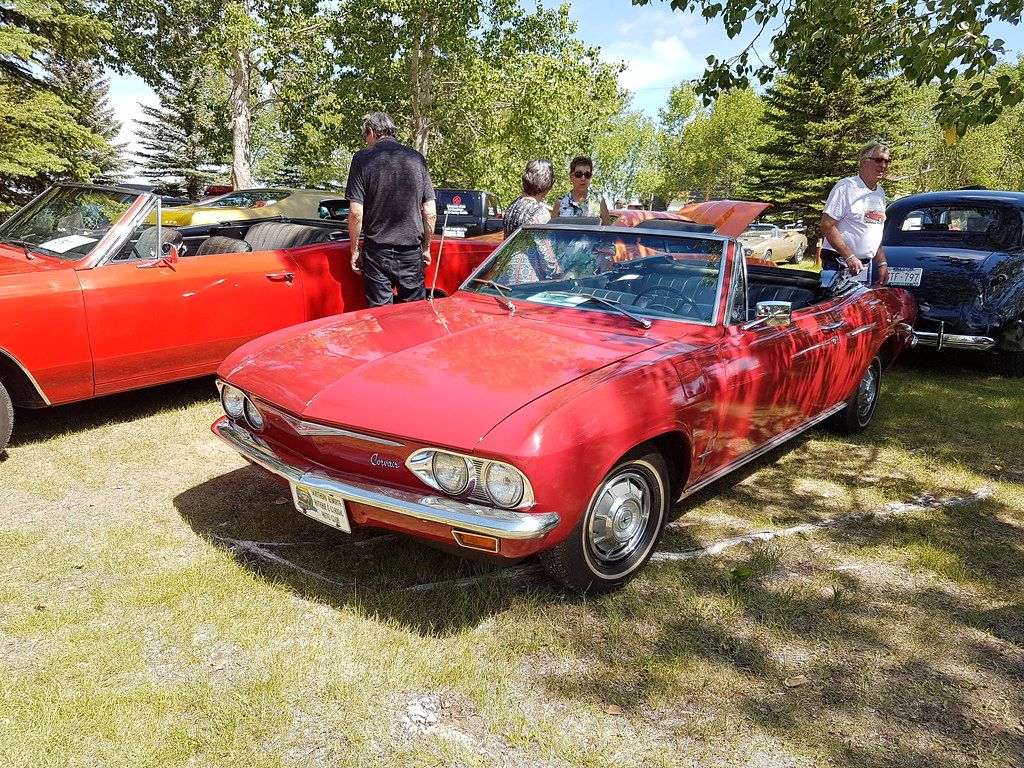
12. **1960-1969 Chevrolet Corvair**The Chevrolet Corvair, manufactured between 1960 and 1969, represents a fascinating, albeit controversial, chapter in American automotive design. Its rear-engine layout and independent suspension were innovative for a domestic car of its era, initially offering a fresh alternative to Detroit’s conventional offerings. In its heyday, it might have been a ‘cool new ride to have,’ captivating buyers with its unique engineering. However, the consensus among today’s experts is that it ‘isn’t worth the cost now.’
One of the most persistent criticisms surrounding the Corvair, particularly its earlier models, concerned its handling characteristics. Peter Niebling reflects on this, stating, ‘The Corvair seems neat with its rear-engine design,’ acknowledging its unique appeal. However, he quickly adds a crucial caveat: ‘But handling those things couldn’t have been more sketchy.’ This reputation for unpredictable and challenging handling, especially under certain conditions, became a significant black mark against the car, famously highlighted by consumer advocate Ralph Nader.
Beyond its handling quirks, the practicalities of owning a Corvair in the modern era present their own set of daunting challenges. Niebling points out that ‘owning a Corvair today can be very expensive.’ This expense isn’t just about routine maintenance; it’s compounded by the specialized nature of its components and the scarcity of skilled mechanics familiar with its unique design. The financial commitment required can quickly erode any initial savings made on the purchase price.
Furthermore, ‘getting the right parts for repair purposes can be tricky and expensive,’ according to Niebling. This difficulty in sourcing authentic and functional replacement parts means that even minor repairs can turn into protracted, costly endeavors. For those considering a Corvair, the appeal of its distinctiveness must be weighed heavily against the very real and ongoing costs of keeping such a historically significant, yet mechanically complex, classic on the road.
Car Model Information: 1964 Chevrolet Corvair Monza
Caption: 1964 Chevrolet Corvair Monza
Name: Chevrolet Corvair
Manufacturer: Chevrolet
Production: 1960–1969
Platform: GM Z platform
Chassis: Unibody
ModelYears: 1960–1969
Assembly: United States,Kansas City, Missouri,Oakland, California,Van Nuys,St. Louis,Flint, Michigan,Belgium,Canada,Mexico,South Africa,Switzerland,Venezuela
Class: Compact car
Successor: Chevrolet Vega
Layout: Rear-engine, rear-wheel-drive layout
Categories: All Wikipedia articles written in American English, All articles lacking in-text citations, All articles needing additional references, All articles with dead external links, All articles with specifically marked weasel-worded phrases
Summary: The Chevrolet Corvair is a rear-engined, air-cooled compact car manufactured and marketed by Chevrolet over two generations between 1960 and 1969. The Corvair was a response to the increasing popularity of small, fuel-efficient automobiles, particularly the imported Volkswagen Beetle and American-built compacts like the Rambler American and Studebaker Lark.
The first generation (1960–1964) was offered as a four-door sedan, two-door coupe, convertible, and four-door station wagon. A two- and four-door hardtop and a convertible were available second-generation (1965–1969) variants. The Corvair platform was also offered as a subseries known as the Corvair 95 (1961–1965), which consisted of a passenger van, commercial van, and pickup truck variant. Total production was approximately 1.8 million vehicles from 1960 until 1969.
The name “Corvair” was first applied in 1954 to a Corvette-based concept with a hardtop fastback-styled roof, part of the Motorama traveling exhibition. When applied to the production models, the “air” part referenced the engine’s cooling system.
A prominent aspect of the Corvair’s legacy derives from controversy surrounding the handling of early models equipped with rear swing axles, articulated aggressively by Ralph Nader’s Unsafe at Any Speed but tempered by a 1972 Texas A&M University safety commission report for the National Highway Traffic Safety Administration (NHTSA) which found that the 1960–1963 Corvair possessed no greater potential for loss of control in extreme situations than contemporary compacts.
To better counter popular inexpensive subcompact competitors, notably the Beetle and Japanese imports such as the Datsun 510, GM replaced the Corvair with the more conventional Chevrolet Vega in 1970.
Get more information about: Chevrolet Corvair
Buying a high-performing used car >>>
Brand: Chevrolet Model: Corvair
Price: $29,988 Mileage: 74,787 mi.
Read more about: More Than Just a Chassis: Uncovering 11 Catastrophic Design Flaws That Defined Automotive Infamy
13. **1974-1981 Triumph TR7**From 1974 to 1981, the Triumph TR7 emerged from the UK as a distinctive sports car, marked by its wedge shape and a contemporary aesthetic that promised a forward-looking driving experience. When it initially ‘dropped,’ as Peter Niebling recalls, it ‘looked slick,’ attracting attention with its bold styling. However, the visual appeal of the TR7 quickly gave way to a less-than-stellar ownership reality, leading many to conclude that it ‘probably isn’t worth the cost of upkeep.’
Niebling’s candid assessment continues, outlining the car’s most significant shortcomings: ‘But it turned out to be unreliable, with many electrical issues and stuff breaking down.’ This litany of reliability concerns, particularly the notorious ‘electrical issues’ often associated with British Leyland vehicles of the era, transformed the TR7 from a stylish cruiser into a frequent visitor to the repair shop. These persistent mechanical and electrical problems were a constant source of frustration for owners, severely detracting from the driving enjoyment.
The challenge of keeping a TR7 on the road is further exacerbated by the difficulty in obtaining necessary components. Niebling’s observation, ‘Good luck finding replacement parts, too,’ highlights a critical issue for modern classic car enthusiasts. The limited production numbers and the manufacturer’s eventual demise mean that locating original or even aftermarket parts can be a time-consuming and expensive ordeal, turning routine maintenance into a significant undertaking.
Compounding these reliability and parts issues, the TR7, while meeting the safety standards of its time, ‘does suffer from certain safety issues like poor brakes.’ While this might be a common characteristic for many older classic cars, it represents an additional factor that can ‘put a serious dent in your return on investment.’ The combination of unreliability, parts scarcity, and dated safety features makes the Triumph TR7 a classic car that often brings more headaches than happiness, despite its initial stylistic charm.
Car Model Information: 1981 Triumph TR7
Sp: uk
Name: Triumph TR7
Caption: 1975 Triumph TR7
Production: unbulleted list
Manufacturer: Triumph Motor Company
Class: Sports car
Layout: FR layout
Predecessor: Triumph TR6
Transmission: unbulleted list
Related: Triumph TR8
Engine: unbulleted list
Abbr: on (coupé)
BodyStyle: unbulleted list
Wheelbase: 85 in
Length: 160 in
Width: 66.2 in
Weight: 1101 kg
Order: flip (coupé)
Height: 50 in
Assembly: unbulleted list
Designer: Harris Mann
Categories: 1980s cars, All Wikipedia articles written in British English, All articles with unsourced statements, Articles tagged with the inline citation overkill template from January 2024, Articles with short description
Summary: The Triumph TR7 is a sports car that was manufactured in the United Kingdom from September 1974 to October 1981 by British Leyland Motor Corporation (BLMC), which changed its name to British Leyland (BL) in 1975. The car was launched in the United States in January 1975, with its UK home market debut in May 1976. The UK launch was delayed at least twice because of high demand for the vehicle in the US, with final sales of new TR7s continuing into 1982.
It was initially produced at the Speke, Liverpool, factory, moving to Canley, Coventry, in 1978 and then finally to the Rover Solihull plant in 1980.
Get more information about: Triumph TR7
Buying a high-performing used car >>>
Brand: Triumph Model: TR7
Price: $12,500 Mileage: 83,693 mi.
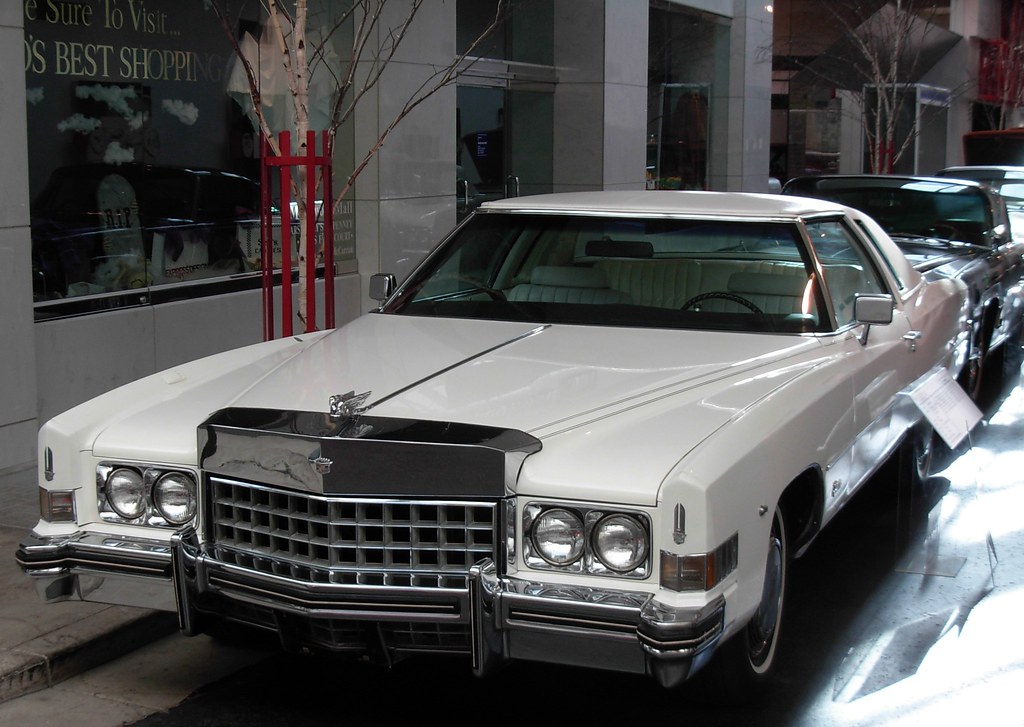
14. **1980-1985 Cadillac Eldorado**The Cadillac Eldorado, a name synonymous with American luxury and personal cruising, spanned several generations, but not all have retained their appeal or reliability. While the 1976 Convertible held a unique place, the models built between 1980 and 1985 represent a different era and a period where the ‘Cadillac Eldorado has had a mixed reputation over the years.’ Specifically, the ‘early models of this classic luxury car have experienced their share of issues,’ distinguishing them as problematic choices for contemporary collectors.
These particular Eldorados often confronted serious mechanical challenges. Andy Saari issued a clear warning, stating, ‘These models faced various mechanical issues, including engine and transmission problems.’ Such fundamental powertrain weaknesses could lead to significant and costly repairs, undermining the very notion of luxury and dependability that a Cadillac was supposed to embody. These were not minor nuisances but rather core component failures that drastically impacted the vehicle’s long-term viability.
Beyond the mechanical woes, the market for these vehicles also shifted considerably. Saari notes that ‘this combined with changing consumer preferences and a decrease in demand has caused the value of these vehicles to plummet.’ As tastes evolved and newer, more refined luxury cars emerged, the appeal of these Eldorados waned, leaving them with significantly diminished resale and collector values compared to other Cadillac classics.
Consequently, the 1980-1985 Cadillac Eldorado stands as an example of a luxury car that, despite its initial grandeur, ultimately failed to deliver on its promise of enduring quality and prestige. The ongoing mechanical liabilities and depreciated market value make it a challenging proposition for anyone seeking a classic Cadillac that combines enjoyment with a sound investment, solidifying its place among cars to approach with extreme caution.
Car Model Information: 1976 Cadillac Eldorado Convertible
Caption: 1963 Cadillac Eldorado Convertible
Name: Cadillac Eldorado
Manufacturer: Cadillac
Production: 1952–2002
Layout: Front-engine, rear-wheel-drive layout
Aka: Cadillac Fleetwood Eldorado
Class: Personal luxury car
Successor: Cadillac CTS
Categories: 1960s cars, 1970s cars, 1980s cars, 1990s cars, 2000s cars
Summary: The Cadillac Eldorado is a luxury car manufactured and marketed by the Cadillac Motor Car Division of General Motors from 1952 until 2002, over twelve generations.
The Eldorado was at or near the top of the Cadillac product line. The original 1953 Eldorado convertible and the Eldorado Brougham models of 1957–1960 had distinct bodyshells and were the most expensive models offered by Cadillac during those years. The Eldorado was never less than second in price after the Cadillac Series 75 limousine until 1966. Beginning in 1967, the Eldorado retained its premium position in the Cadillac price structure, but was manufactured in high volumes on a unique, two-door personal luxury car platform.
The Eldorado carried the Fleetwood designation from 1965 through 1972, and was seen as a modern revival of the pre-war Cadillac V-12 and Cadillac V-16 roadsters and convertibles.
Get more information about: Cadillac Eldorado
Buying a high-performing used car >>>
Brand: Cadillac Model: Eldorado
Price: $29,499 Mileage: 31,898 mi.

15. **1966-1976 Jensen Interceptor**The Jensen Interceptor, produced from 1966 to 1976, is a car that certainly possesses a unique charm, blending muscular American V8 power with elegant Italian styling and British craftsmanship. Its distinctive grand tourer silhouette and powerful engine could easily tempt enthusiasts looking for a classic with a bold presence. However, beneath this attractive veneer lie significant practical drawbacks that often make it a less-than-ideal acquisition for the modern collector.
One of the most pressing concerns for the Jensen Interceptor is its notorious susceptibility to corrosion. According to Stamatis Zotos, the vehicle is ‘prone to rust issues,’ a characteristic that can lead to extensive and expensive bodywork. Rust, particularly in cars of this vintage, can compromise structural integrity and significantly inflate restoration costs, transforming a dream car into a financial burden if not meticulously inspected and maintained.
Moreover, the very American V8 engines that provide the Interceptor its potent performance come with a substantial trade-off in terms of running costs. The car is known for its ‘high fuel consumption,’ a factor that, in today’s economic climate, makes it ‘impractical — and expensive — for everyday use.’ For many classic car owners, the desire to drive their prized possession regularly clashes directly with the Interceptor’s thirst for fuel, limiting its practical enjoyment.
Therefore, while the Jensen Interceptor offers undeniable visual appeal and a thrilling driving experience, the twin challenges of pervasive rust issues and prohibitive fuel consumption mean that its ownership requires a deep commitment of both time and money. For collectors seeking a classic that offers more consistent enjoyment and a less demanding maintenance schedule, the Interceptor’s allure must be weighed carefully against its well-documented and costly practicalities.
As we conclude this comprehensive dive into the classic car market’s less-than-stellar offerings, a clear pattern emerges: the romantic notion of owning a vintage beauty must always be tempered with a pragmatic assessment of its long-term viability. Whether it’s an iconic nameplate with a problematic generation, a design marvel with inherent flaws, or a luxury statement that crumbled under the weight of poor engineering and soaring maintenance, each car on this list serves as a potent reminder.
Car Model Information: 1974 Jensen Interceptor
Caption: 1971 Jensen Interceptor MkII (US)
Name: Jensen Interceptor
Manufacturer: Jensen Motors
Assembly: West Bromwich
Production: 1966–1976,6,408 produced
Class: Grand Tourer
BodyStyle: hatchback,convertible,coupé
Engine: {{cvt,383,cid,L,1,Chrysler B engine#383,V8 engine
Transmission: manual transmission,Torqueflite
Length: cvt
Width: cvt
Height: cvt
Weight: cvt
Wheelbase: cvt
Predecessor: Jensen CV8
Layout: Front-engine, rear-wheel-drive layout
Designer: Carrozzeria Touring
Related: Jensen FF
Categories: 1970s cars, All Wikipedia articles written in British English, Articles with short description, Cars introduced in 1966, Commons category link is on Wikidata
Summary: The Jensen Interceptor is a grand touring car which was hand-built at the Kelvin Way Factory in West Bromwich, near Birmingham in England, by Jensen Motors between 1966 and 1976. The Interceptor name had been used previously by Jensen for the Jensen Interceptor made between 1950 and 1957 at the Carters Green factory. Jensen had extensively used glass-reinforced plastic for the fabrication of body panels in the preceding two decades, but the new Interceptor was a return to a steel body-shell. The body was designed by an outside firm, Carrozzeria Touring of Italy, rather than the in-house staff. The early bodies were built in Italy by Vignale, before Jensen took production in house, making some subtle body modifications.
Get more information about: Jensen Interceptor
Buying a high-performing used car >>>
Brand: Jensen Model: Interceptor
Price: $14,750 Mileage: 0 mi.
Making an informed decision in the classic car world is not merely about appreciating aesthetics or historical significance; it’s about understanding the full spectrum of ownership. From mechanical reliability and parts availability to restoration costs and market value, these factors collectively dictate whether a classic car becomes a cherished companion or a regrettable financial drain. The true joy of classic motoring lies in finding a vehicle that sparks passion without simultaneously igniting a fuse to your bank account. Choose wisely, for the open road awaits, and you deserve a ride that’s a pleasure, not a penance.


